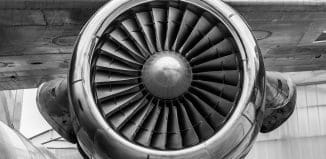This Drone Can Change its Center of Gravity During Flight
This post is also available in:  עברית (Hebrew)
עברית (Hebrew)
Quadrotor drones have been used in many areas such as cargo transportation, agriculture, and search and rescue. However, the low energy density of power sources and the low energy efficiency have prevented them from a wider range of applications where a large payload has to be carried or long flight time is required.
A researcher has come up with a patented design for drones that works in windy conditions, is more energy-efficient and can handle a larger payload.
“Our drone design was inspired by the wings and flight patterns of insects,” said Xiumin Diao, an assistant professor in Purdue University’s School of Engineering Technology. “We created a drone design with automatic folding arms that can make in-flight adjustments.”
Diao said the design makes drones more energy efficient because the movable-arm technology allows for the use of the full range of rotor thrust. It also provides drones with improved stability in windy conditions because the folding arms can move and change the center of gravity of the device during flight.
As drones on the market now have fixed arms – “that greatly reduces their maximum payload capacity when the payload is offset their center of gravity,” Diao said. “Our design allows a larger payload because the movable arms can liberate part of rotor thrust to fight the weight on the overall device.”
He added that the foldable arms also can help in search-and-rescue operations using drones because they can more effectively navigate the air conditions in ravaged areas and morph by moving the arms to go through narrow spaces.
According to purdue.edu, simulation shows that an example quadrotor with rotatable arms can save up to 13% of energy. Experiments show that the same example quadrotor can save even more energy in practice, owing to the byproduct of the arm-rotation. The technology was published in the ASME Journal of Dynamic Systems, Measurement and Control.































